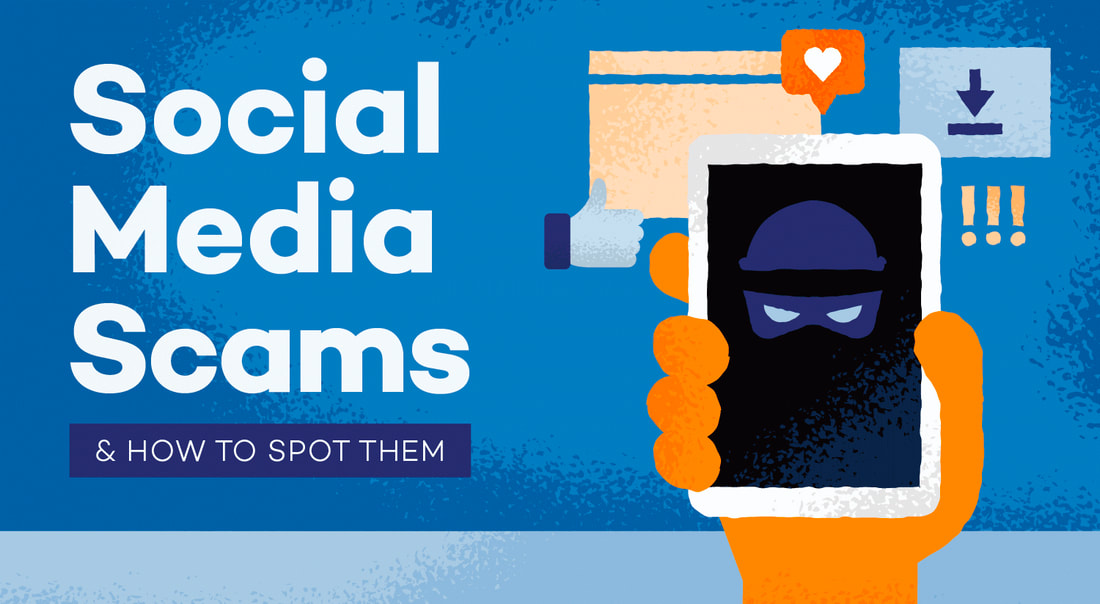|
Learn how to recognize the most common scams and protect your personal data on Facebook and Instagram. I stopped sharing details about my life with strangers and locked down my privacy settings on social media apps, I blocked access for potential scammers. And I encourage you to do the same.
Facebook still has the largest user base, with 2.9 billion monthly active users. Instagram has 1.4 billion. That's a very large and diverse pool of victims for a potential scammer. I’ve added a short description of the warning signs for each scam and what you can do to protect yourself from them.
Your social media posts are a treasure trove of valuable information. Your public contact list alone can help a criminal. The list of names connected to your public social media accounts is enough for a scammer to impersonate a family member or a friend with a spear phishing email. In the email, the scammer may convince you to reveal private information such as industry secrets, login credentials, credit/debit card numbers, or embarrassing personal information. You don't have to stop posting on your favorite social platform, but it is wise to stop posting personal information on your public feed. You don't know who is reading your words or viewing your photos. Give strangers less access to your personal life by trying these seven steps for locking down your social media activity: Evaluate your privacy settings. Your Instagram account is public by default so that anyone can see your posts. Set your account to “private” so only approved followers can see your posts, comment, and send direct messages. You can't hide your profile pictures or cover photos on Facebook, but you can hide almost everything else from people not on your friends list by tweaking the elaborate privacy settings. Use a password manager and enable multi-factor authentication on your accounts. One of the easiest ways to prevent unwanted logins on your accounts is to keep your login credentials in a password manager and enable multi-factor authentication for your accounts. Facebook and Instagram offer a few kinds of authentication, but I recommend using a mobile authenticator app. Keep track of third-party apps. You may have many third-party applications connected to your social media accounts. For example, on Instagram, you can see which apps and websites are connected to your social media accounts by visiting the Settings section of your account profile and navigating to a section labeled “Apps and Websites.” If you see one you do not recognize, it could be a malicious app spying on your online activity. Review the list of third-party applications connected to your account. Delete any that you do not use frequently or do not remember installing. Only buy from verified profiles and brand accounts. Before purchasing anything via a social media platform, verify the seller's account. Legitimate brands on Instagram and Facebook are verified by the platform and have a blue circle checkmark next to their name. Perform quarterly name searches. Impersonation can happen to anyone. To avoid the damage of someone using your name, photos, or other personal information against you or your social network, make a habit of searching Facebook and Instagram for your name. It only takes a minute, and it is an easy way to identify and report impostor accounts. Decline friend requests from strangers. Not everyone wants to be your friend. Don't accept friend requests from anyone you don’t know. The more strangers in your friends list, the higher the risk you will be approached with a scam. Never click on suspicious links sent to you or respond to unsolicited messages. Whether it is an email or a private message, avoid clicking on unsolicited videos or links, even if you recognize the sender's name. If you think a friend sent you something, double-check with them via phone or text before clicking the link. Be especially wary of messages containing phrases such as, “OMG! Is this you?” or “Have you seen this yet?!”
0 Comments
Your comment will be posted after it is approved.
Leave a Reply. |
Archives
November 2023
|
|
2951 Britannia crescent
Port Coquitlam BC, V3B 4V5 778-776-6222 Hours of operation Mon - Fri 9 a.m. - 6 p.m. Sat 11 a.m. - 5 p.m. (by appointment only) Sunday & Holidays - Closed |
Business Number 778569517BC0001 - © Copyright CompuBC, All Rights Reserved.
|

